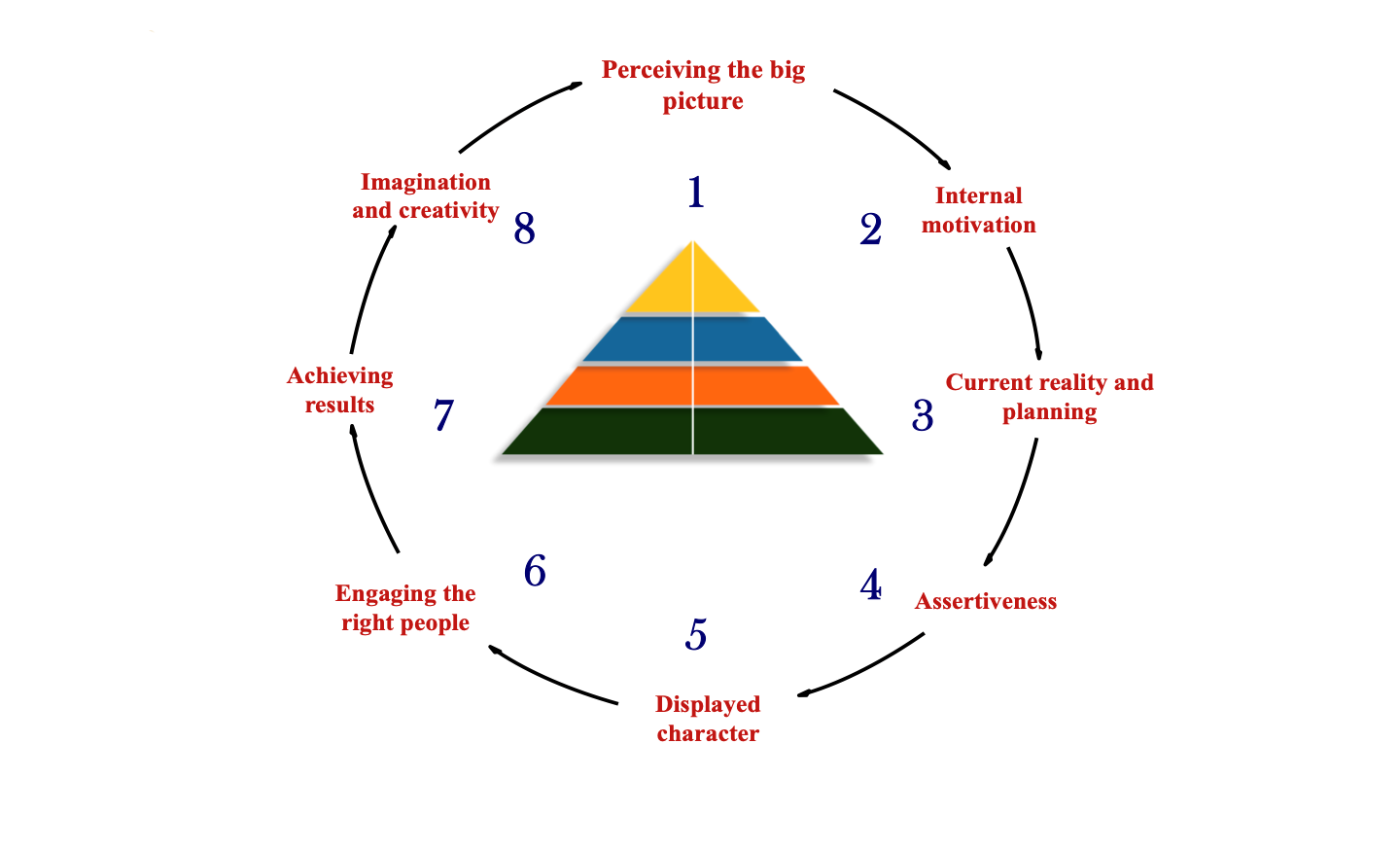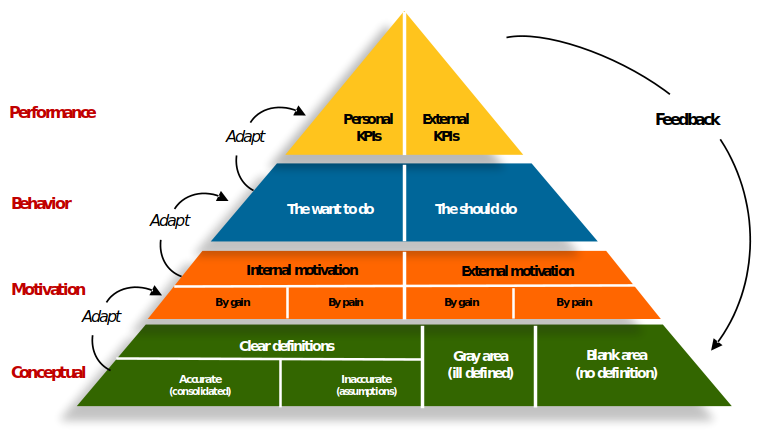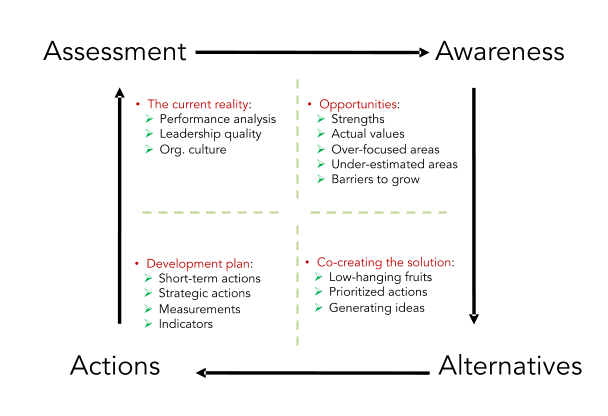M4level performance analysis model
Traditionally, experts measure culture by asking questions, sort of self-evaluation, rating elements on a Likert scale, and other types of questions that test how you feel about something. In the end, the company gets a summary of the answers and can see if they are performing well or badly. This approach is simple, but it doesn’t tackle complexity.
We use a more sophisticated process of analyzing performance to come up with an accurate description of the unique profile of the individual/organization and how the current level of performance is constructed.
We help understand the organizational culture as a complex system and as an analysis of the current level of performance. The outcome of the assessment easily pinpoints the gaps and the impact that each variable makes on other variables and on the overall performance.
In the last 20 years, we could go beyond what is normally assessed as behavioural competencies, and view the individual and the organization as a complex system with clear interrelationships between the variables that form the personal construct.
Our development process starts there when everything is on the table.

Every individual is unique, every organization is unique
When George Kelley developed the theory of personal construct in 1950, he used the term uniqueness of every human being, and how we interpret the world around us using personal schemas or personal ways of seeing the world. After years of using our approach in different cultures, our biggest belief is that people cannot be divided into certain personality types with predefined characteristics, or several leadership styles, or types of communication, but instead there is a unique personal construct that leads to the individual performance.
Over the years, we have been experiencing how the personal construct of every individual is unique, and what is interesting is that the perfect style that leads to the full potential is the unique authentic style of every individual, not the copied or behaviorally displayed competencies only.
Eunoia’s personal construct model goes into dimensions underneath the displayed behavior ↓
(what we observe)
(how we feel)
(why we feel so)
a comprehensive personal construct that maximizes the development outcome for the high level of customization that addresses the actual needs at different levels of the personal construct.
The Eunoia 4-level pyramid
M4level model suggests four levels for assessing individuals and organizations, and accordingly, there are four levels of dealing with the development needs:

Eunoia 4-A Approach to deal with complexity
Our structured sequence of activities starts by analyzing the current level of performance, to identify opportunities for improvement, and designing a unique customized solution for each organization.
The 4A Approach describes our clients’ journey of sustainable development from the current reality to the desired future as follows:→

